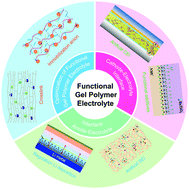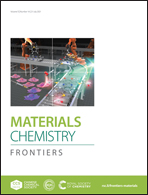Recent advancements of functional gel polymer electrolytes for rechargeable lithium–metal batteries
Abstract
Lithium–metal batteries (LMBs) as the next generation of promising high energy density alternatives among electrochemical storage technologies have received worldwide attention. However, the incompatibility between metallic lithium and traditional liquid electrolytes is the dominant reason for the formation of lithium dendrites, consequently leading to the deterioration of LMBs. Although the development of solid electrolytes such as inorganic electrolytes, composite polymer electrolytes, and polymer electrolytes solve the leakage problem of the toxic and volatile liquid electrolyte, the low ion migration in the bulk and the electrode-electrolytes at room temperature cannot guarantee continuous Li+ carrier transportation. Gel polymer electrolytes with a synergetic superiority of the solid electrolytes and liquid electrolytes are attractive for application in high energy density LMBs. In this review, the scientific challenges, ion transfer mechanisms, and design strategies for gel polymer electrolytes (GPEs) are presented. The design of functional gel polymer electrolytes, focusing on the thermal response behavior, metallic lithium anode and cathode in whole batteries, is summarized. The challenges and perspectives for the rational design of safe and functional gel polymer electrolytes towards high performance, and the assurance of safe LMBs, are also discussed.

- This article is part of the themed collections: Energy storage with rechargeable Li batteries and beyond and 2021 Materials Chemistry Frontiers Review-type Articles


 Please wait while we load your content...
Please wait while we load your content...